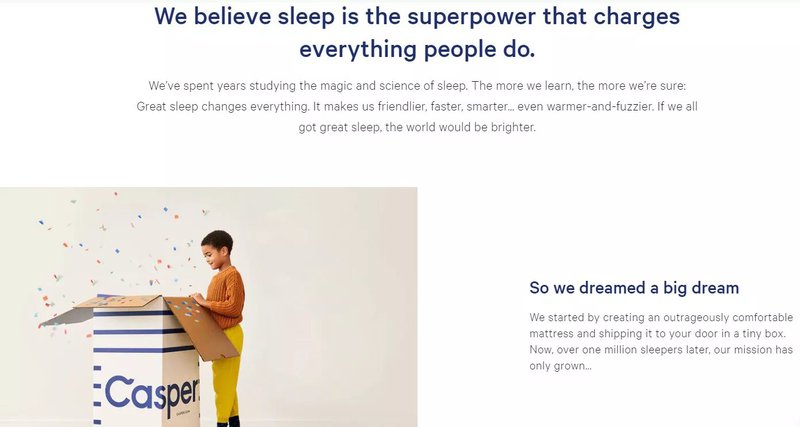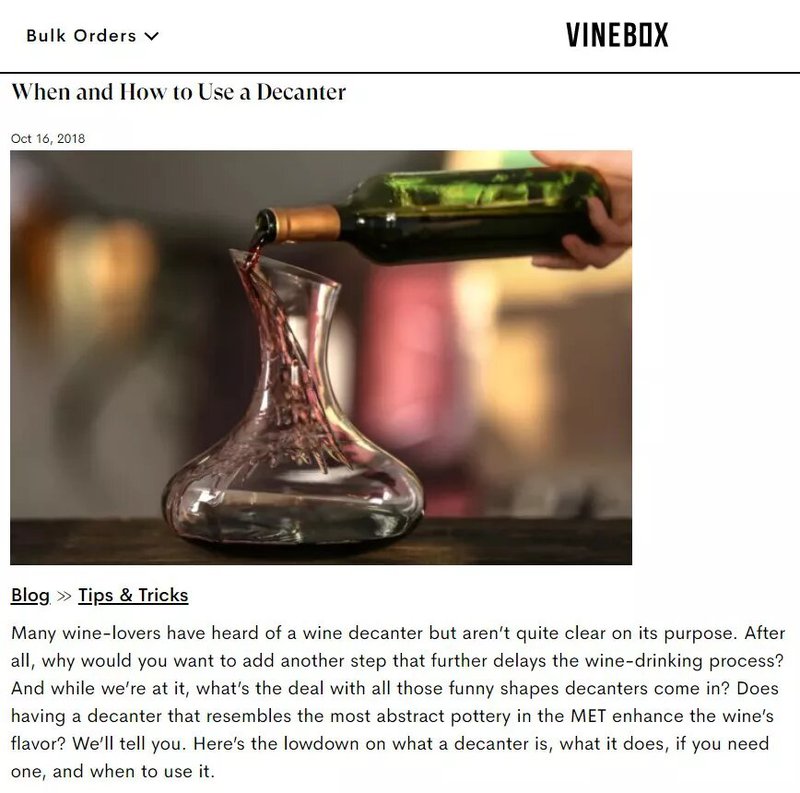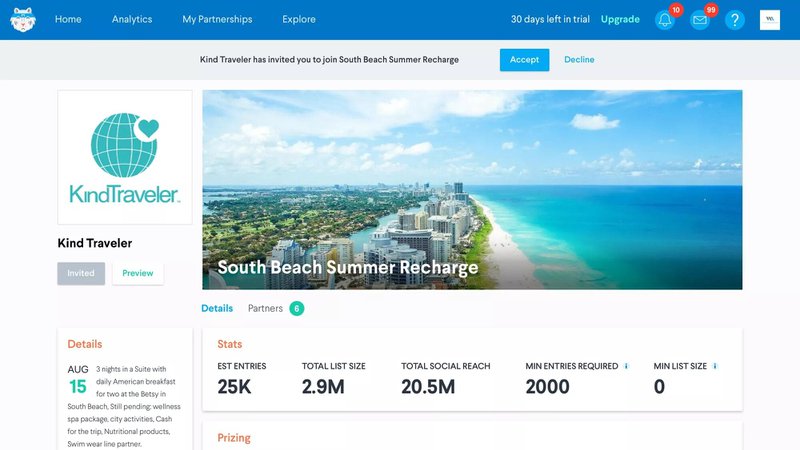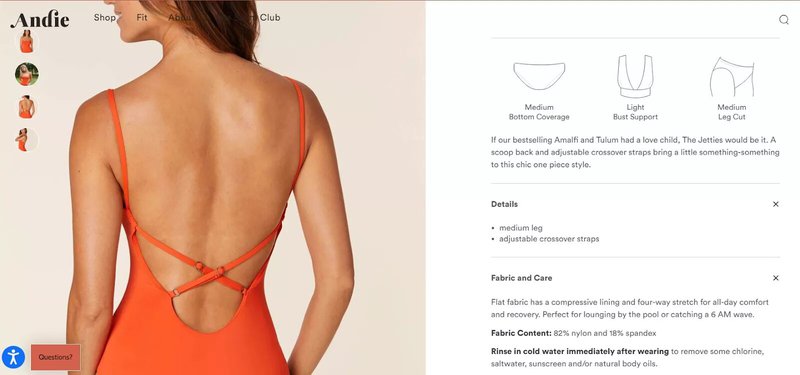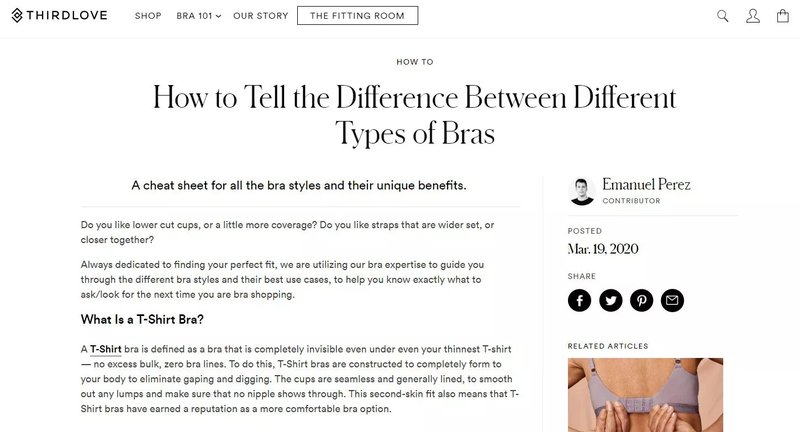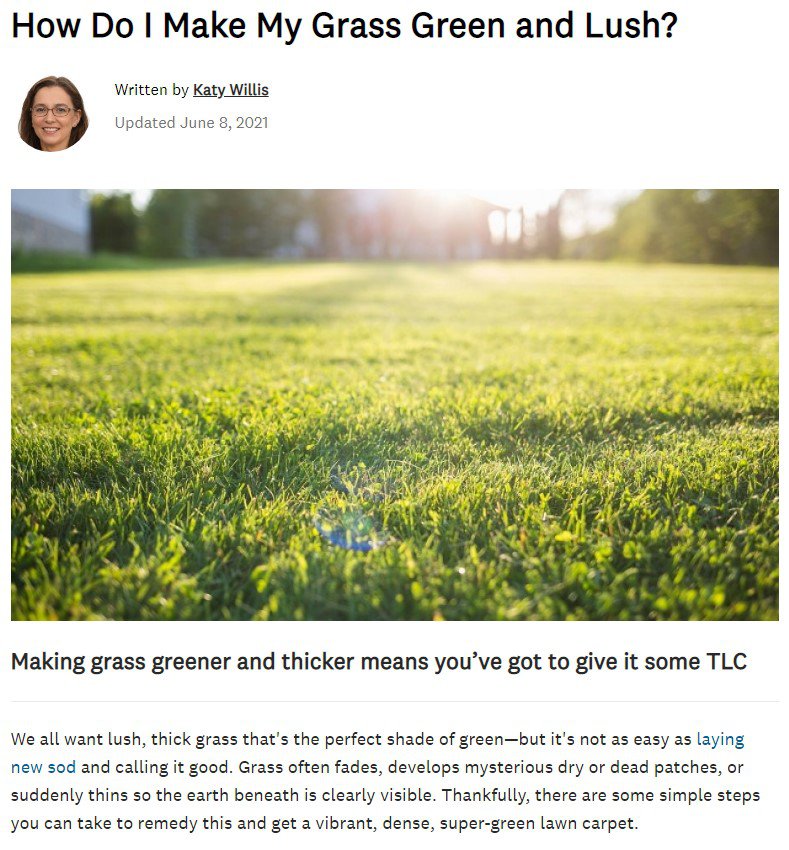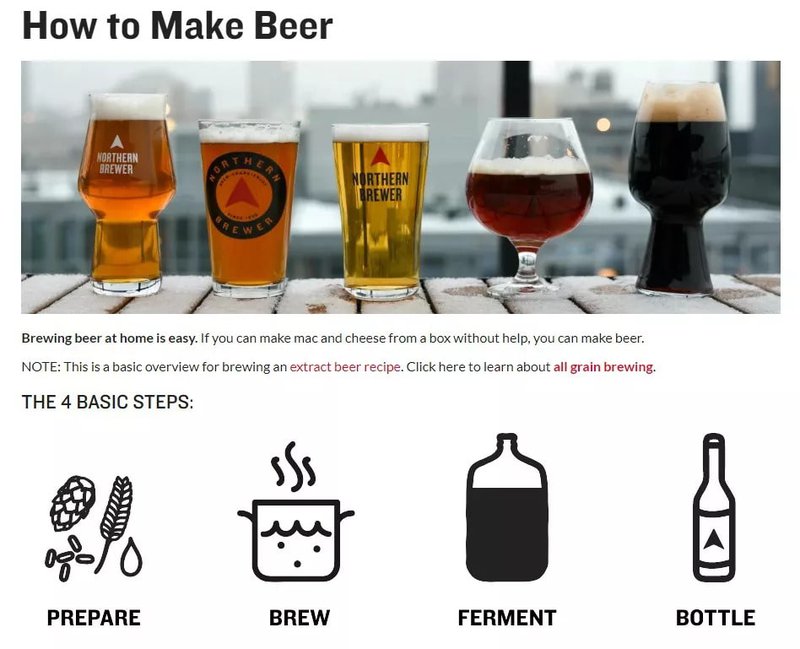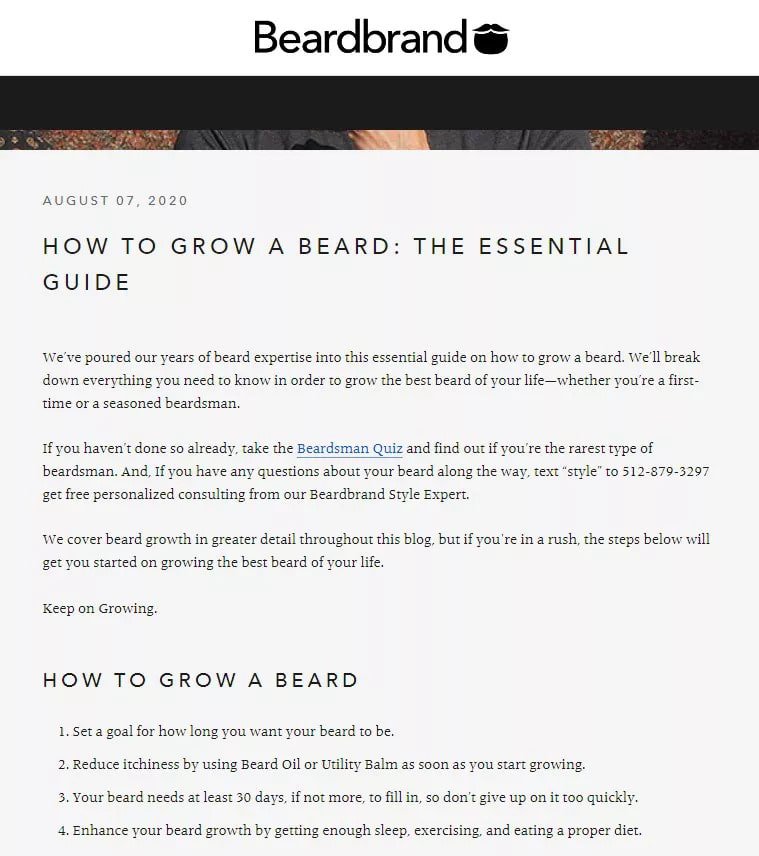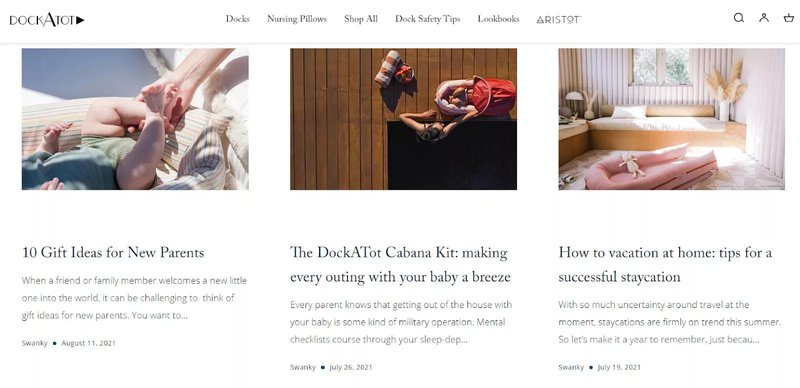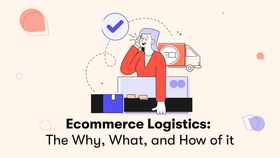15 Winning Content Marketing Strategies for eCommerce Brands
Get the top content marketing tips for eCommerce brands + 15 examples of the top brands like MVMT, Birchbox, and BeardBrand. We cover social media, influencers, videos and much more.
Updated November 6, 2024

With the new iOS 14.5 changes and Facebook advertising becoming harder and harder, content is becoming the main ingredient behind the success of any eCommerce brand.
The key is to have a cross-channel content strategy that spans search, social, and programmatic advertising to really engage shoppers throughout their customer journey.
This is the secret behind MVMT’s phenomenal growth that took them from zero to $90 million in just five years.
They leveraged the power of social media, brand storytelling, and User-Generated Content to promote the idea that “style shouldn’t break the bank.” Today MVMT has a community of 1.5 million loyal customers and 5 million social media followers — all because of their brilliant content marketing efforts.
In this article, we show you how to create an effective eCommerce content marketing strategy using real-life examples from some of the world's biggest brands.
Let’s dive in.
What is content marketing?
Content marketing is an inbound digital marketing strategy that focuses on bringing your potential customers to you. You can accomplish this by serving them high-quality content wherever they may be seeking answers — on search engines, social media platforms, product review sites, etc.
The goal of a content marketing campaign isn’t to hard-sell products or services to prospective customers. It’s to educate, engage, and entertain them through useful and relevant content.
If you can consistently deliver valuable content to your audiences, you stand a good chance of boosting customer loyalty, organic traffic, conversions, and customer retention. The fact that 82% of marketers today actively use this form of marketing proves how useful it can be.
The types of content every eCommerce brand needs
An effective eCommerce content marketing strategy focuses on the needs of your target audience — their biggest challenges, concerns, and questions. Your focus should be to meet those needs with compelling content (in formats they like and on channels they use).
The type of content you create — an eBook, a downloadable guide, a social media post, a blog post, a guest post, or a product buying guide — will largely depend on your business goals. For example, you might want to create blog content to boost brand awareness, increase organic or referral traffic, or improve conversions and retention.
A consistent content strategy for eCommerce avoids confusion, keeps a brand aligned with its target audience, and adds value over time. Without it, your messaging will be ineffective and even contradictory — you will merely be speaking into a void with no tangible results to show for it.
With that in mind, let’s explore some of the most effective content types that B2C marketers should leverage for effective eCommerce content marketing.
1. Write web content that converts
Your website content needs to be engaging enough for your audiences and ultimately, lead to conversions. Focus on positioning your brand in a way that breaks the clutter and stands out above the rest.
For instance, Casper positions itself as “the Sleep Company.” They don’t just sell sleep products — they use quirky humor and great brand stories to sell you a good night’s sleep and a well-rested body.
You should also create engaging product descriptions that capture how your products are made, the technology and materials you use, customer success stories, FAQs, and video content. Check out this product description from Nectar that includes all this and more.
Pro tip: looking for a top-notch content expert? Check out our list of the top content writers for hire.
2. Tell your story in captivating blog posts
Storytelling is a powerful eCommerce content marketing strategy that can help you build appeal. It engages the audience by giving them a deep understanding of your brand’s DNA.
So, tell the stories of your founders, achievements, values, and culture to connect emotionally with your audience. You can also share customer stories that reflect their struggles or challenges, and how your products have helped them.
The outdoor lifestyle brand YETI does a great job of connecting emotionally with their audiences through stories that focus on their customers’ lifestyles, struggles, and aspirations.
3. Create evergreen content for every stage of the buyer journey
Content that educates audiences about how to use your products creates a special image of your brand. Your audience begins to perceive you as an educator, not merely a seller.
Although this tactic is more common among B2B marketers, it can be a great strategy for eCommerce websites looking to get more organic traffic. SEO is one of the biggest benefits of content marketing — informational posts, how-to articles, and shopping guides.
Compelling content — optimized with eCommerce search terms that your audiences use — can go a long way in improving your search engine rankings. Take a cue from wine brand VINEBOX, which has some amazing content on their blog including how-to's, tips and tricks, and other useful resources on wines.
Pro tip: looking to create stellar evergreen content? Check out our list of the top content marketing agencies for hire.
4. Include social proof throughout your site
Social proof in the form of reviews and ratings from your current customer base is an important trust signal. Their feedback on your product quality, delivery times, returns, refunds, etc. can add to the authenticity of your website and products. So, incorporate them using a tool like Yotpo or Loox on your product and category pages.
Here's an example from Glossier.
Customer success stories about your products can also motivate your potential customers. You could interview customers that have shared positive reviews and use their stories to create catchy images and interactive videos for your site. Such content is highly engaging and tends to perform better than text.
You can also leverage guest posting — work with influential guest bloggers in your niche and have them share authentic reviews about your products. Just make sure that the guest bloggers you select have a solid reputation for being authentic and unbiased.
For greater visibility, look for guest bloggers who have tens of thousands of monthly blog visitors and social media followers. Use tools like BuzzSumo and Tomoson to help you find and evaluate the best people to collaborate with.
5. Optimize your content for organic search
Last but not least, you want to make sure that your content ranks well on search engines. because that could become a really powerful source of website traffic for your brand. This is not as complicated as it sounds.
Search engine optimization divides into two distinct parts - on-page and off-page optimization.
On-page SEO is all about optimizing the content on your website. This includes conducting thorough keyword research, optimizing your site speed by looking at Google’s Core Web Vitals, and doubling down on your top content.
Focus on creating content that solves the customer pain points and answering questions that customers are asking.
Off-page SEO involves content that is created on other websites to help you get brand awareness, authority, and drive traffic to your website. This is done through link building, guest blogging, and affiliate marketing.
Here are some quick wins to help you get your off-page SEO off the ground:
- If you target a specific region you could use local SEO and get links from local directories
- Collaborate with blogs to create product guides and holiday shopping guides
- Hire online publications to write product reviews and promotional pieces of content about your products
- Hire influencers to create UGC and video content for your brand (YouTube videos really help your Google rankings)
- See if there are influencers among your existing loyal customers and create
- Launch your products on Google Shopping to maximize your search visibility.
Use SEO tools like Ahrefs or Semrush to automate both your on-page and off-page campaigns.
How to come up with content ideas
So, what’s the secret behind creating compelling content that resonates with your target market and boosts your conversion rates? Here are three ways that content marketers can create highly engaging content.
1. Research your competitors
What your competitors do can tell you a great deal about what's working in the industry. You can glean which topics are gaining maximum traction and which ones are being shared the most.
Look at the channels and content formats they use. But don't just blindly copy everything they're doing, create a list of curated content that would work well for your audience. One of the most common content marketing mistakes many brands make is to try everything and cater to everyone.
You must consider the content format your audience prefers, the social media networks they use the most, and use those customer preferences to create something truly valuable and unique.
2. Look up top-performing content on search
You can also reverse engineer the content creation process based on what your audience searches for. The easiest way is to search for keywords relevant to your business on Google, YouTube, or BuzzSumo.
The top results can give you a fair idea about what kind of content sells and help you find content marketing examples that you could draw inspiration from.
You can also use a keyword search tool like Ahrefs or SEMrush or Chrome extensions to find more keywords and topics. Review the top-performing content to come up with a list of blog post ideas.
3. Ask your audience
As a business owner, what could be better than getting inputs directly from your customers? This will help you understand their challenges and aspirations first-hand — some of which may not have been captured even by your biggest competitors.
However, interviewing a large number of customers can be a costly and time-consuming process. For practical reasons, it’s better to start with a simple survey. Tools like SurveyMonkey or Typeform can help you create online questionnaires, which you can then share with your email lists.
Once you have that data you can dig deeper by studying representative samples of each customer segment to come up with blog post ideas that resonate with them.
Want to learn how to put your customer first? Check out our customer-first marketing guide.
Content Promotion and Distribution
Once you’ve created your content, you must start thinking about how to share it. Besides running email marketing campaigns, here are a few ways you can go about distributing and promoting your content.
1. How to share your content on social media
Social media is a great place to distribute your content, but you must consider which platforms your audience uses the most. So, find out more about the user demographics of each platform before you make a decision.
Instagram - Since this platform is quite visual, it can work best for your brand if you have lots of product images and videos to share.
Pinterest - Pinterest also has a visual appeal. Users can save your product images to their boards which creates links to your content. This can help you generate more referral traffic to your website.
Facebook - A great platform for pretty much everything - share product images, videos, or even your blog posts to get more visibility and traffic.
Twitter - Twitter serves as a quicker alternative to running email marketing campaigns to promote your blog posts. Just write a short description of what it’s about and share it with all your followers in an instant.
YouTube - Youtube videos are great at engaging, entertaining, and educating audiences, and YouTube offers a great opportunity to showcase your brand and your products. Brands like the Dollar Shave Club have built a name for themselves by having a solid video marketing strategy.
Another really successful tactic is to get social media influencers to create video reviews or “unboxing videos” of your products. This will can help you broaden your reach by putting your products in front of the audiences of these influencers.
2. How to create co-branded giveaways
Co-branded giveaways are a great way for two or more non-competing brands to combine their content marketing efforts and reach more audiences. Giveaways are a fun way to engage your audience and make them part of an exciting experience.
With DojoMojo, you can easily connect with other brands to create co-branded giveaways. The tool helps you set up a landing page easily which you can then share with your audience.
Whoever participates in the giveaway also signs up to receive marketing emails/messages from these brands. So with one giveaway you can receive 20k-50k new leads and remarket to them.
Pro tip: set up marketing automation to retarget these leads using email flows, SMS messages, and paid advertising.
Now that we’ve covered the nitty-gritty of running a successful content marketing campaign, let’s take a look at some shining examples of eCommerce content.
15 examples of brilliant content marketing for eCommerce sites
1. Andie
Luxury swimwear brand Andie has lots of great content on their website. Their product pages contain detailed descriptions about product styles, fabrics, and care as well as social proof in the form of ratings and reviews. They also offer detailed fit and style guides and a fit quiz to help shoppers make the right selection.
2. MADE
MADE specializes in designer furniture and home decor. They have an “IDEAS” section on their website where you can find several informational posts with tons of advice and tips on design and style.
The following piece of content is an incredibly detailed product buying guide that gives you a rundown of various wall art styles, how to choose the right piece for your room, where and how to hang wall art, and how to care for it.
3. Thirdlove
Thirdlove strives to solve the biggest challenges of their audience with interactive content like quizzes, informational posts on bra styles, fit issues, lingerie care, and how-to articles. This guide, for example, does a great job of educating customers on how to distinguish between various bra styles. It's packed with value and weaves in links to products wherever relevant.
4. Relax The Back
Relax The Back specializes in ergonomic and back care products. They have excellent product pages with detailed descriptions, specs, warranty information, reviews, and videos that demonstrate the features and benefits of each product. They also have several informative posts on health and wellness with useful tips and advice.
5. Boden
Clothing brand Boden can teach you a thing or two about successful social media marketing. They have an active presence on Facebook, Instagram, and Twitter where they regularly post attractive images and videos. The company also posts live videos that generate a lot of engagement and collaborates with fashion influencers to promote their brand.
6. Angi
Angi (previously Angie’s List) helps you find vetted professionals for home projects and services. Besides their service listings, they have an extensive collection of articles and research that bring in 6M visitors per month. This article, for example, is great for customer education as it includes practical and actionable tips for readers.
7. Birchbox
Birchbox, a seller of subscription-based beauty and grooming products, has excellent product pages with detailed descriptions, reviews, and information on how to use each product. They also have a blog section where you can find tons of knowledge, advice, and how-to articles on beauty and wellness.
8. Northern Brewer
Northern Brewer, a seller of homebrewing equipment, has dedicated an entire section of its website to educating customers. Here you’ll find informational posts on homebrewing and winemaking, instructional videos, as well as interactive content like a priming sugar calculator.
Homebrewing 101 is a how-to article that teaches you how to make beer in four simple steps and weaves in links to help readers find relevant products easily.
9. Beardbrand
Beardbrand sells quality beard products and has grown almost entirely using content marketing. They started by sharing unique insights about growing a beard on their blog, YouTube channel, and Tumblr.
Even today, they churn out incredibly detailed and useful articles and videos that bring in tons of traffic. Here’s an example of a massive 5000-word article that contains tons of valuable information on how to grow a beard.
10. Lunya
Lunya, a women’s sleepwear brand, has great product pages with detailed descriptions on styles, fabrics, care, size, fit, and social proof in the form of reviews. What’s more interesting, however, is their approach to blogging.
They showcase stories of women who embody their brand while offering practical advice. They also weave in relevant product links seamlessly without being overly promotional.
11. Proflowers
Proflowers is an online flower and plant delivery service. They have an outstanding flower guide section on their eCommerce site called “Florapedia” besides having excellent product pages and blog posts.
This, for example, is a massive guide that talks about 151 different types of flowers with information on sun needs, soil needs, zones, images, and so much more.
12. Charlotte Stone
Charlotte Stone makes one-of-a-kind funky footwear for women. They offer matching outfit ideas while showcasing products on their blog. They also showcase the stories of their followers and have them style one of their products in three different ways to create some amazing UGC.
13. Bespoke Post
Bespoke Post offers themed subscription boxes for hipster men. They post a lot of DIY-style, useful, and informative content on their blog such as this post on how to make the Hot Toddy. It takes you through the history of this cocktail which makes for an interesting read and gives you the recipe along with some great tips on how to get it right.
14. DockATot
DockATot sells multifunctional docking stations for babies. On their blog, you’ll find lots of great content — from gift guides and how-to's to inspiring customer stories and product buying guides.
The unique thing about their gift guides is that they don’t shy away from recommending products from other brands (besides their own). They just focus on providing value to their readers through their content.
15. Boll & Branch
The luxury bedding brand Boll & Branch, uses a mix of informative posts, how-tos, and tips and advice to add value to their audience. This post, for example, uses custom charts and takes an educational approach to bust some common myths about thread counts.
Recap
The average eCommerce conversion rate is 2.57%, you need a solid content marketing strategy to generate interest and awareness. Paid advertising can bring you more visitors, but in the absence of engaging web content, you’ll fail to convert them.
And remember, it takes much more than just writing a really good post. It’s also important to track and measure your content marketing campaigns.
Google Analytics can help you see how your content is performing using parameters like page views, bounce rate, and click-through rate.
Content promotion and distribution become a pivotal area in any content marketing campaign, and then comes SEO expertise.
If you or your team lack the time and resources to get all the elements right, consider hiring a world-class content planner. Mayple can help you connect with fully vetted experts with proven track records of scaling companies in your niche. Easier, faster, and more affordable than working with a marketing agency. Get started today!

